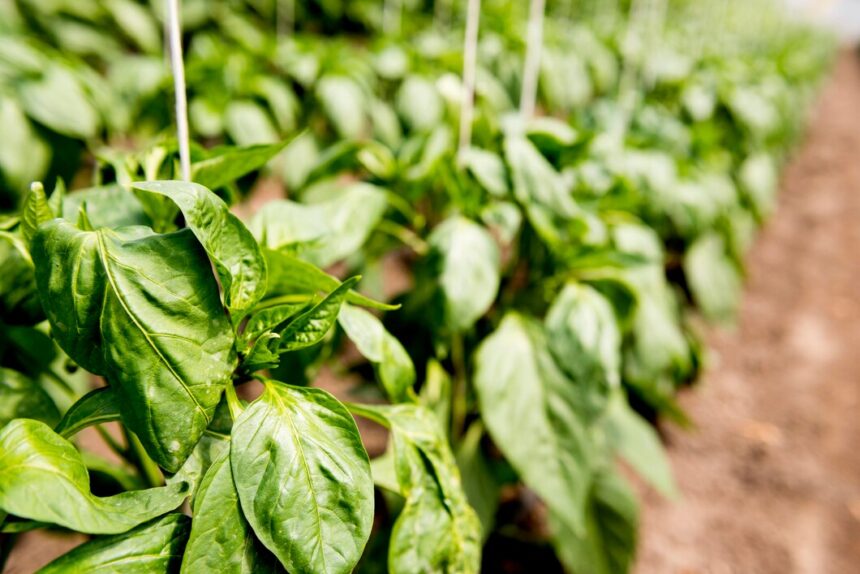Fusarium wilt is a common and potentially devastating fungal disease affecting basil plants. Caused by the pathogen Fusarium oxysporum, this disease can lead to significant yield losses if not managed promptly. Here are ten early signs that your basil might be suffering from Fusarium wilt:
- Yellowing Leaves: One of the earliest symptoms is the yellowing of older leaves. This discoloration typically starts at the tips and edges and spreads inward.
- Wilting: The leaves may appear wilted despite the soil being adequately watered. This wilting often occurs during the heat of the day and may improve in cooler conditions.
- Stunted Growth: Basil plants infected with Fusarium wilt may exhibit stunted growth. This is due to the disease impairing the plant’s ability to take up nutrients and water effectively.
- Leaf Drop: Infected plants might experience premature leaf drop. As the disease progresses, more leaves may fall off, leaving the plant sparse and weakened.
- Brown Vascular Tissue: When you cut the stem of an infected basil plant, you may notice brown or dark discoloration in the vascular tissue. This discoloration indicates that the fungus is blocking water transport.
- Reduced Flowering: Fusarium wilt can impact the plant’s flowering ability. Infected basil plants may produce fewer flowers or none at all, affecting overall harvest.
- Root Rot: The disease can cause root rot, where roots become dark and mushy. This can be seen if you gently pull up the plant and examine the roots.
- Leaf Necrosis: As the disease progresses, the leaves may develop necrotic spots—areas that turn brown and die off. These spots can be irregular and may spread over the leaf surface.
- Premature Bolting: Some basil plants affected by Fusarium wilt may bolt prematurely, sending up a flower stalk before they reach maturity. This can lead to a decline in leaf quality.
- Reduced Essential Oils: Basil is prized for its essential oils, but Fusarium wilt can affect the production of these oils, leading to a reduction in the plant’s aromatic qualities.
Management and Prevention
Managing Fusarium wilt involves several strategies:
- Choose Resistant Varieties: Select basil varieties known for their resistance to Fusarium wilt.
- Improve Soil Drainage: Ensure that soil drains well to prevent excess moisture, which favors fungal growth.
- Practice Crop Rotation: Avoid planting basil or related plants in the same soil for consecutive years.
- Sterilize Tools: Disinfect gardening tools and equipment to prevent the spread of the fungus.
- Remove Infected Plants: Immediately remove and dispose of infected plants to reduce the risk of spreading the disease.
By recognizing these early signs and taking proactive measures, you can help safeguard your basil plants from the detrimental effects of Fusarium wilt.
Join 'Farmers Mag' WhatsApp Channel
Get the latest Farming news and tips delivered straight to your WhatsApp
CLICK HERE TO JOIN






